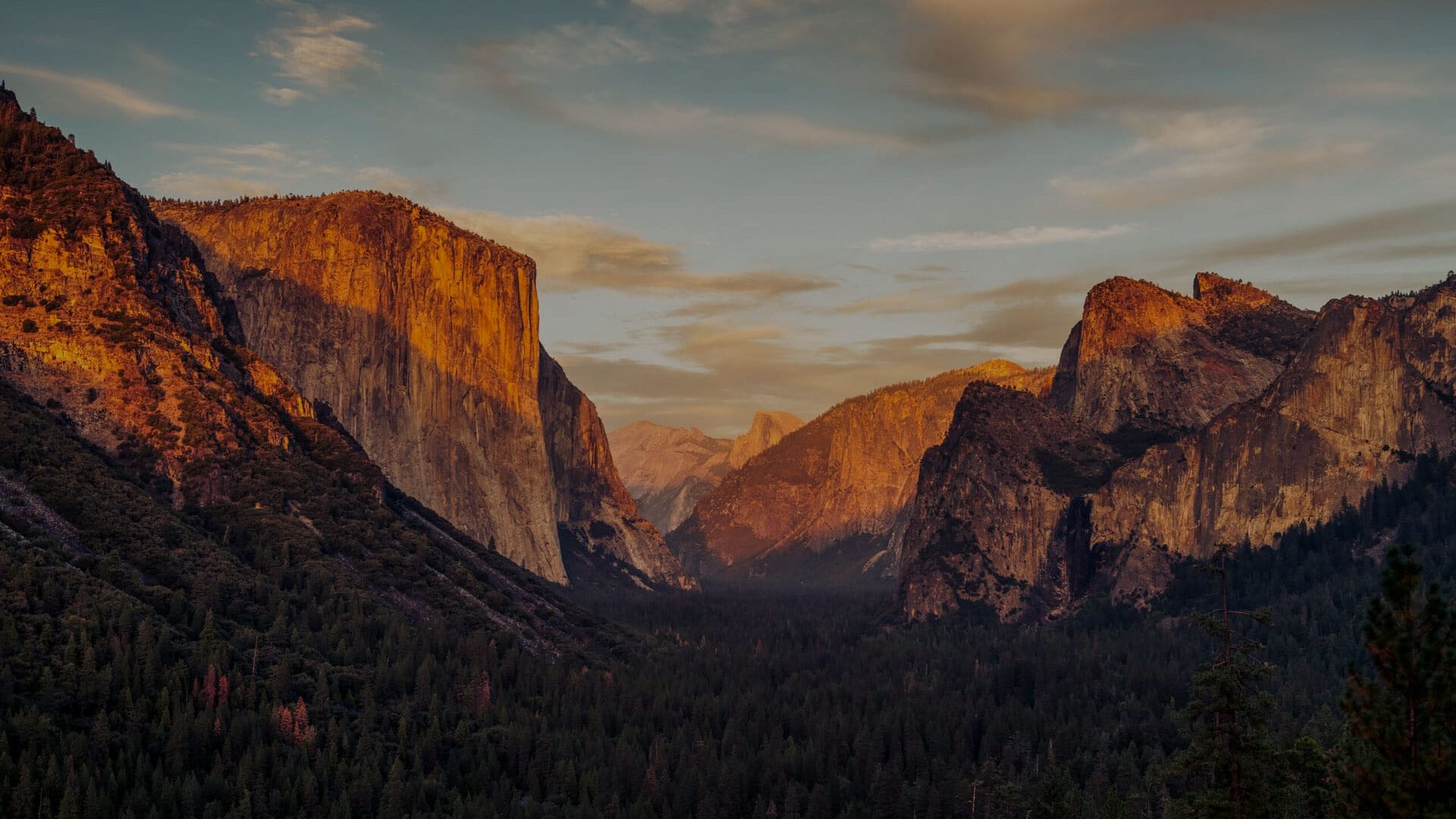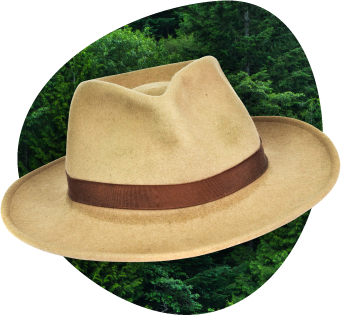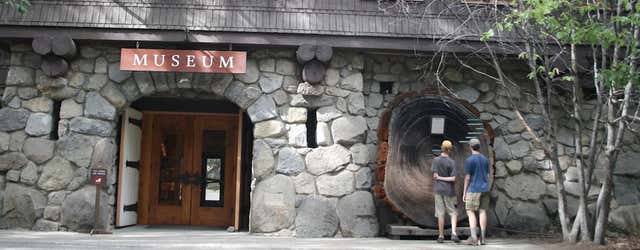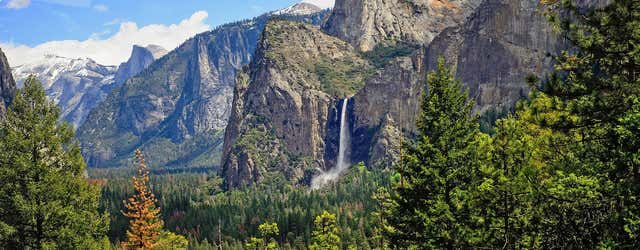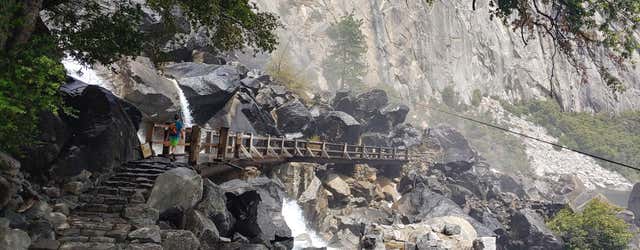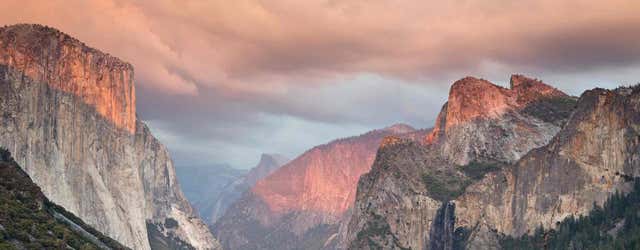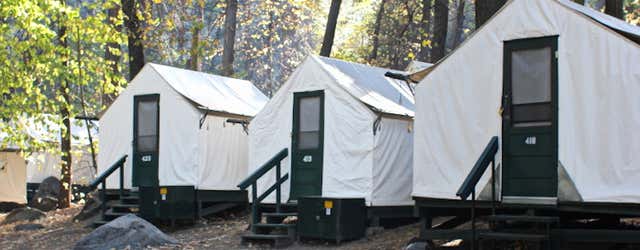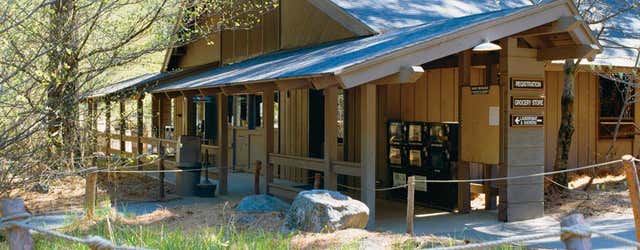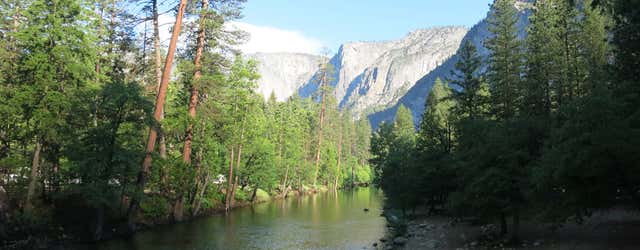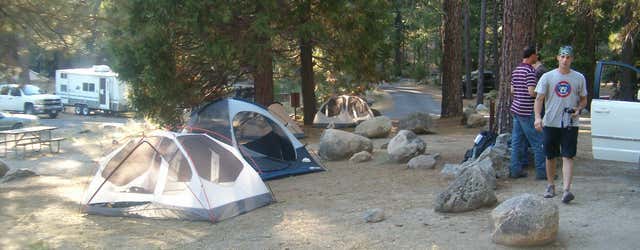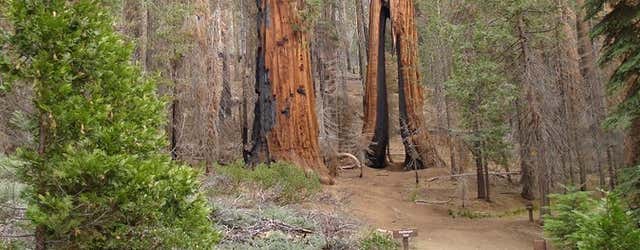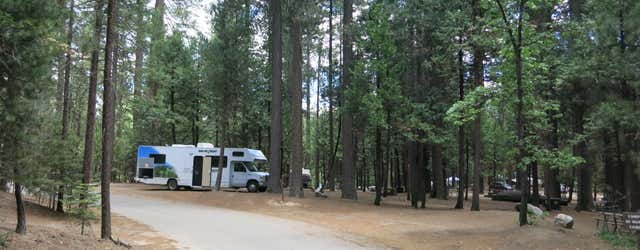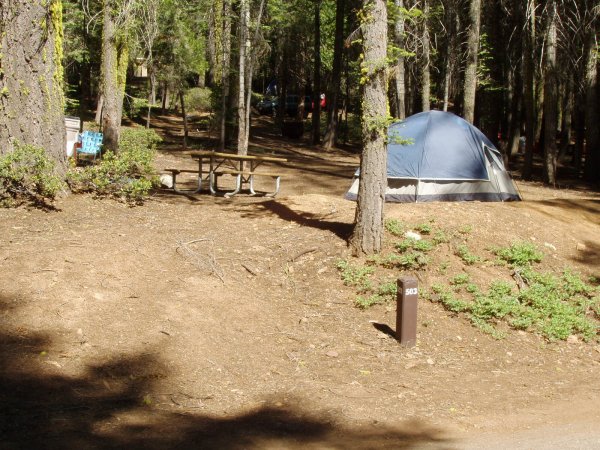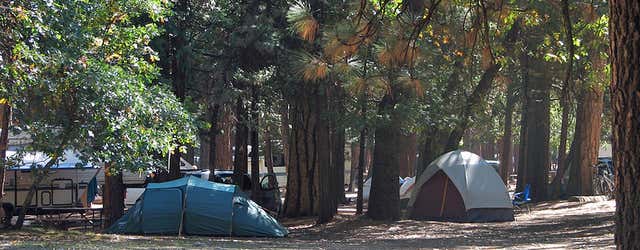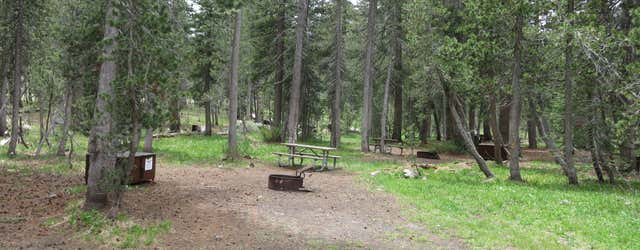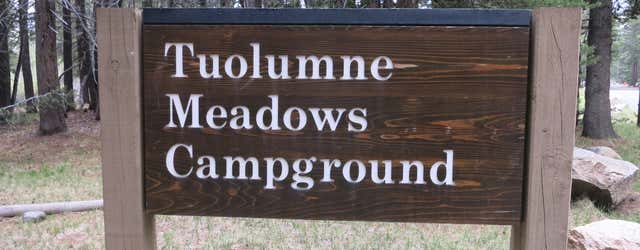Originally the home of the Ahwahneechee people, Yosemite National Park was declared as federally preserved land in 1864, and became a national park in 1890. Since its establishment, millions of visitors have made the trek to witness the grandeur of the granite peaks and walls, enormous flowing waterfalls, lush green meadows, and a variety of wildlife, including curious black bears, bobcats, deer, coyotes, foxes, and Sierra Nevada bighorn sheep. Visitors come to climb El Capitan, camp in Tuolumne Meadows, explore Yosemite Village, hike to Yosemite Falls, stay at the historic Ahwahnee Hotel, and photograph the majestic flora and fauna that make this one of the most beloved U.S. national parks.
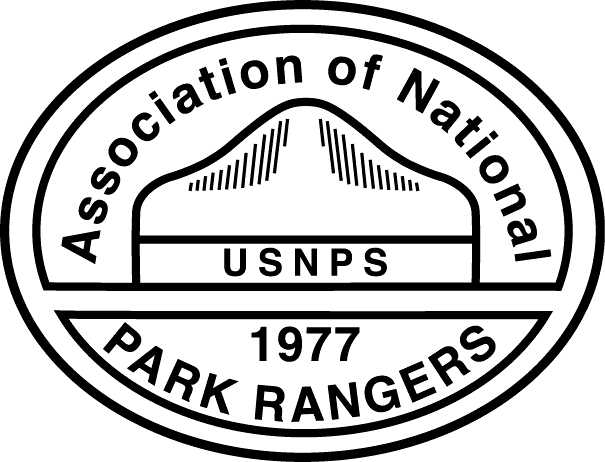
Written for you by park rangers
Who knows a national park best? Yep, the rangers who live and breathe its fresh, clean air every day. That’s who we turned to for help in creating this guide. Roadtrippers has partnered with the Association of National Park Rangers and convinced its rangers to spill their secrets for your benefit.
Getting to and around Yosemite National Park
Getting to Yosemite by air: Yosemite National Park is located in Central California. If you plan to fly, the most convenient airports to access the more popular west side of the park are the Fresno Yosemite International Airport and the Sacramento International Airport. Many visitors also fly into Los Angeles, San Francisco, and Oakland, which are convenient if you’re planning to see other parts of California during your trip. For direct access to the east side of the park, flying into the Reno-Tahoe International Airport in Nevada is the best option.
Getting to Yosemite by car: Most people visit the park by driving personal vehicles. The park entrance fee is $35 per car and is valid for 7 days. There are five entrances into Yosemite National Park. Four of them are located on the western side of the park. The fifth, the Tioga Pass Entrance, is on the more remote eastern side. Where you’re coming from and where you want to go within the park will determine which route and entrance to take.
From Sacramento: Take Highway 99 south to Highway 120 east. When you get to Evergreen Road, head north to the Hetch Hetchy Entrance. Or, continue on Highway 120 east until it turns into Big Oak Flat Road going south, which will take you to the Big Oak Flat Entrance. Either way is approximately 175 miles from Sacramento to Yosemite Valley, and will take around 3.5 hours.
From the San Francisco Bay Area: Take Interstate 580 east to Interstate 205 east to Highway 140 east to the Arch Rock Entrance. The drive to Yosemite Valley is approximately 215 miles, and will take around 4 hours.
From Fresno: Take California 41 north to the South Entrance. The drive to Yosemite Valley is approximately 90 miles and will take around 2.5 hours.
From Los Angeles: Take Interstate 5 to California 99 north to California 41 north, which will lead you to the South Entrance. The drive to Yosemite Valley is around 310 miles and will take around 5.5 hours.
From Reno, Lake Tahoe, and Mammoth: Located on the east side of the park, the Tioga Pass Entrance is only open May through October, due to winter weather conditions. This is the easiest access to Tuolumne Meadows, which is an idyllic place for camping, rock climbing, and fishing. From Reno, take United States 395 south to California 120 west to get to the Tioga Pass Entrance. Tioga Road leads to the popular Tuolumne Meadows Campground. This route is approximately 161 miles, which should take less than 3 hours. From Mammoth, take California 395 north to get to Tuolumne Meadows in less than an hour.
Gas is available at Crane Flat, El Portal, and Wawona; there are no gas stations in Yosemite Valley or Tuolumne Meadows. Electric vehicle charging stations are located at El Portal, Tuolumne Meadows, and in the valley, as well as in the park’s gateway communities.
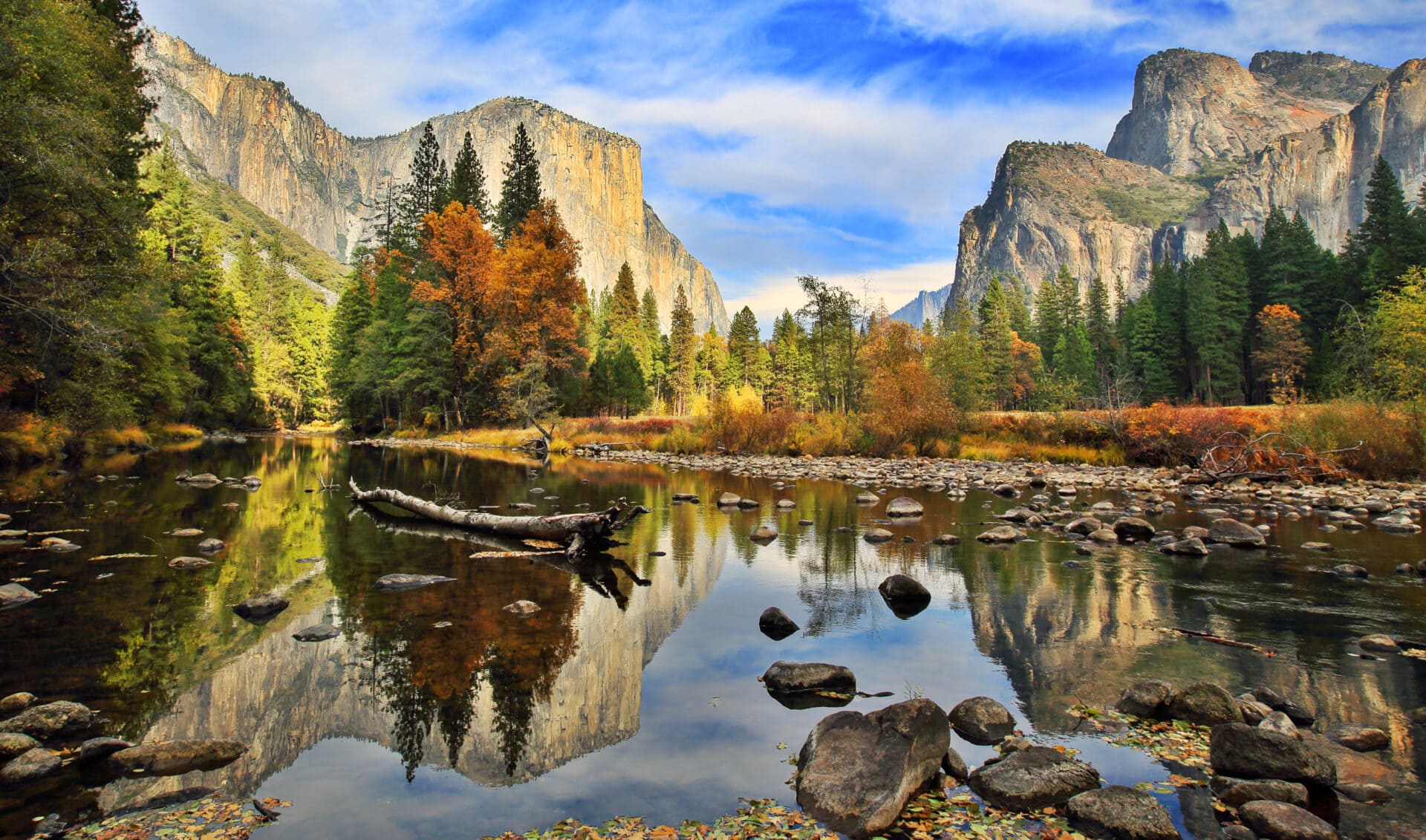
Getting to Yosemite by bus: While there are multiple ways to get to Yosemite, including many tour companies that serve people visiting from Los Angeles, Fresno, and San Francisco, the Yosemite Area Regional Transit System, or YARTS, also provides convenient year-round public bus service to the park from hotels and other stops in Merced, Sonora, Mariposa, and Oakhurst, California. You can also take Greyhound to Merced and transfer to YARTS.
Getting to Yosemite by train: If you prefer to travel by train, you can take the Amtrak San Joaquin train, which connects to the Amtrak Thruway Bus (run by YARTS) in Merced to get to Yosemite Valley.
Getting around the park by shuttle: When visiting or staying in the park, sometimes it’s easiest to park your car and explore the area via the free Yosemite Valley shuttle system, which provides convenient access around Yosemite Valley. Yosemite Hospitality also offers guided bus tours throughout the park.
The National Park Service warns that GPS directions to or within Yosemite aren’t always accurate—follow posted road signs instead.
When’s the best time to visit Yosemite National Park?
Whether you visit Yosemite National Park in the winter, summer, spring, or fall, keep in mind that it gets cold in the park at night. No matter when you visit, bring a warm coat and prepare for lows to routinely dip to 30 degrees in May and September and 40 degrees from June to August. If you visit any other time of year, plan for even colder weather, especially overnight.
Summer
The most popular time of year to visit is from June to August. The weather is generally the most temperate, but it’s also one of the busiest times of year. You’ll need to be patient with traffic, crowded trails, and waiting in line for food or souvenirs.
Winter
From December through February, Yosemite is a winter wonderland. The summer crowds have dissipated, the ground is covered in a pristine white blanket of snow, and you can explore the park on cross-country skis or with snowshoes. But keep in mind that a large number of roads will be closed due to snow. The road over Tioga Pass often closes in October and does not reopen until May or June. Because of this, plan to approach the park from the west during the colder months, unless you have definite information that the Tioga Pass Entrance is open. You can learn about current conditions on the park’s website.
Shoulder seasons
Visiting Yosemite National Park in early September can help you avoid the busiest times of the year, still enjoy nice weather, and see the leaves turn colors. Springtime is typically when the waterfalls are flowing the most and wildflowers are in bloom, so it’s a great time for hiking.
Weather can be hard to predict in Yosemite. Pack layers—wool for wicking, a hat to keep you warm or keep the sun off, and a windbreaker. Be sure to bring sunscreen even in winter, since the sun reflects off the snow. Be eco-friendly and pack a reusable water bottle that can be filled at designated filling stations throughout Yosemite Valley.
If you have kids, the visitor center is also where to pick up Junior Ranger books to earn a Junior Ranger badge. This is an interactive activity that will keep kids engaged and informed while touring the park.
Several centers are open during the summer and are staffed by NPS rangers to help with wilderness permits and more. The Big Oak Flat Information Station, located on Big Oak Flat Road, carries books, maps, and wilderness permits. The Wawona Visitor Center is located in Hill’s Studio in Wawona. Here you’ll find the work of artist Thomas Hill, a bookstore, wilderness permits, and an information desk. During the winter months, self-registration wilderness permits for Wawona trailheads are available on the porch. The Tuolumne Meadows Visitor Center features exhibits on the area’s history, flora and fauna, and geology. There’s also a ranger-staffed information desk and bookstore. At the Tuolumne Meadows Wilderness Center, visitors can get wilderness permits, maps, bear canisters, and guidebooks; find information on pre-trip planning and minimum-impact camping; and learn about the Yosemite Wilderness.
Regions
Yosemite National Park is a huge park with a lot to offer visitors. One of the best ways to visit Yosemite is to break up your visit into sections. There are four main sections of the park:
Yosemite Valley: Most park visitors spend the majority of their visit in Yosemite Valley. Many of the park’s most famous natural and cultural features are located within this 7-mile-long and 1-mile-wide valley, along with most of the park’s visitor facilities, such as dining options, restrooms, and museums.
The Wawona Road Corridor to Glacier Point and the Mariposa Grove of Giant Sequoias: Highway 41 is the north-south road within the park and is the most direct way to drive from Fresno International Airport to Yosemite Valley. Within the park, Highway 41 becomes Wawona Road. There are many features to see and things to do along Wawona Road, including the Mariposa Grove of Giant Sequoias (with a free shuttle to the lower grove), the historical town of Wawona, and spectacular views from Glacier Point Road—a seasonal road that is closed during the winter months, typically from December to April, due to snow. The entire Glacier Point Road was closed in 2022, and 30-minute delays are possible through the fall of 2023.
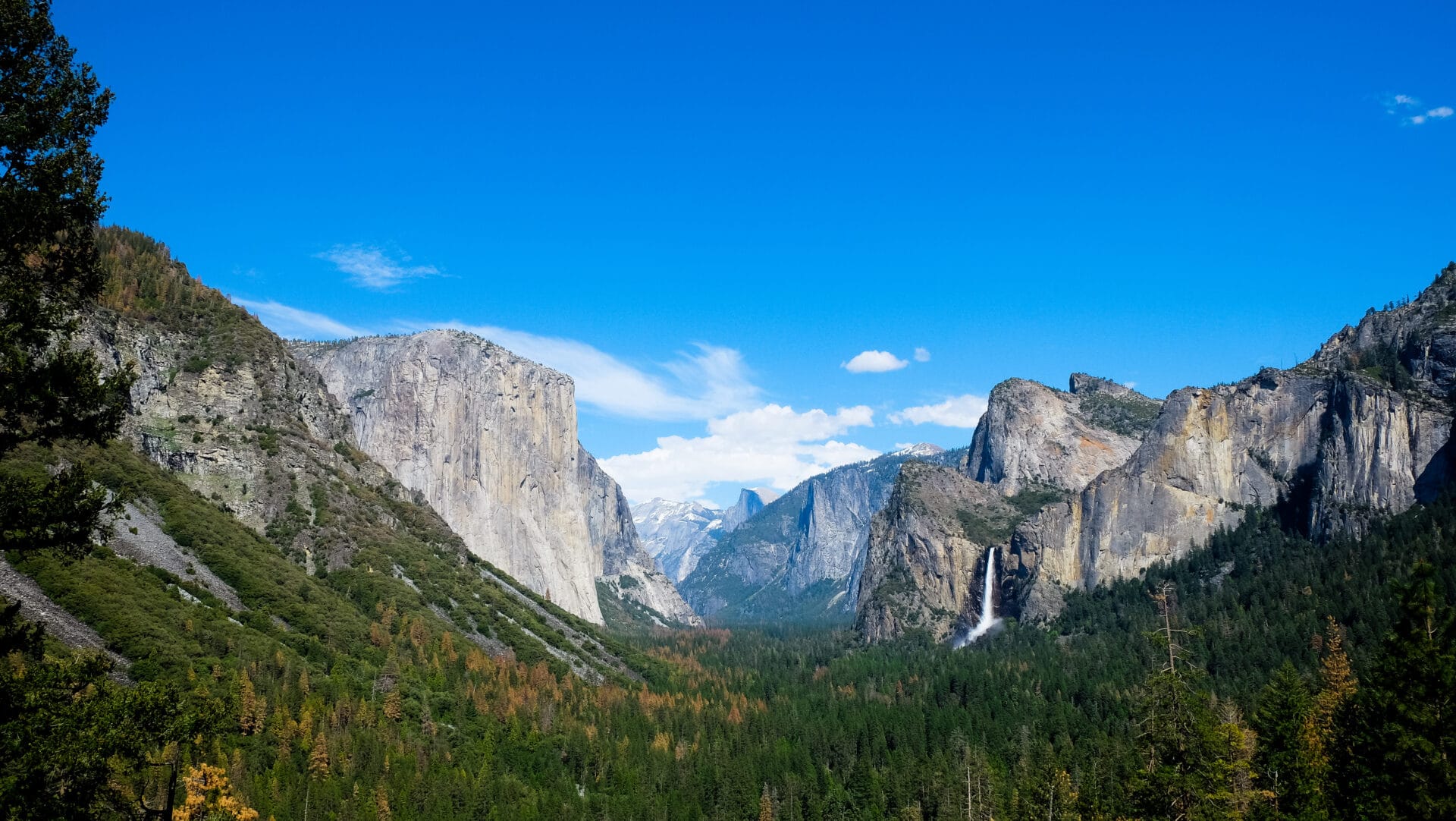
The Big Oak Flat Road and Hetch Hetchy: The Big Oak Flat Road is located in the northwest section of the park and is a continuation of Highway 120 inside Yosemite National Park. This is the most direct way to get to Yosemite Valley from locations near San Francisco, Sacramento, Napa Valley, and Sonora, California. Here you’ll find one of the smallest and least-visited giant sequoia groves inside Yosemite, the Merced Grove of Giant Sequoias, located 6 miles west of Crane Flat. Another must-see destination found in the northwest section of Yosemite is the popular hiking area of Hetch Hetchy. It is home to the O’Shaughnessy Dam and Hetch Hetchy Reservoir, which serves as a water source for the City of San Francisco.
Tioga Road and Tuolumne Meadows:
No trip to Yosemite is complete without taking time to explore the High Sierra region of the park. The peaks and meadows in this area are most conveniently accessed via Tioga Road, or Highway 120 east to Lee Vining. This 47-mile scenic drive connects Crane Flat to Highway 395 on the east side of the park. Many spectacular destinations and trailheads are located along Tioga Road, including Tuolumne Meadows, Olmsted Point, Tenaya Lake, and many trailheads for hiking in the area. Tioga Road is a seasonal road, due to its high elevation and snow accumulation. The road closes each fall after the first major snowstorm of the season and reopens when weather and road conditions allow each spring.
Getting around the park by car: Yosemite is open all year round. Keep in mind that from November through May, snow may cause some areas of the park to be inaccessible by car. This includes Highway 120 that goes through the park. Be sure to carry chains, as they may be required if the roads are snowy or icy. In the summer, fires in the park can change road conditions in a moment’s notice and the time to drive around Yosemite can be substantial. As with any national park, make sure you check the National Park Service page for the most up to date alerts about park conditions.
Parking is available at Yosemite Village, Curry Village, and near Yosemite Falls. If you find a parking spot, plan to leave your car there—you may not be able to find another one.
Things to do at Yosemite National Park
Scenic drives
All the roads in Yosemite National Park are scenic, but the most famous route is the 46-mile drive along Tioga Road from Crane Flat to Tioga Pass. The road is typically open from late May or early June through sometime in November. For the most iconic and awe-inspiring view of Yosemite, take the South Entrance through the 4,233-foot Wawona Tunnel to see unforgettable Yosemite Valley, El Capitan, Bridalveil Fall, and Half Dome. Pull off at the Tunnel View scenic overlook, which is a historic site.
Ranger programs
One way to learn about Yosemite is by attending a ranger-led interpretive program. Yosemite Hospitality offers nature and history programs, the Ansel Adams Gallery offers photography walks, and the Yosemite Conservancy offers guided outdoor adventures and theater and art programs. Check the program listing on the park’s website, in the Park Guide, or on the park’s calendar for specific program offerings.
Events
There are numerous types of events that take place in Yosemite National Park throughout the year, such as campfire and evening programs, cultural and craft demonstrations, children’s programs, festivals, exhibitions and shows, lectures, performances, and more. Plan ahead and see what’s taking place during your visit by checking the park’s online calendar.
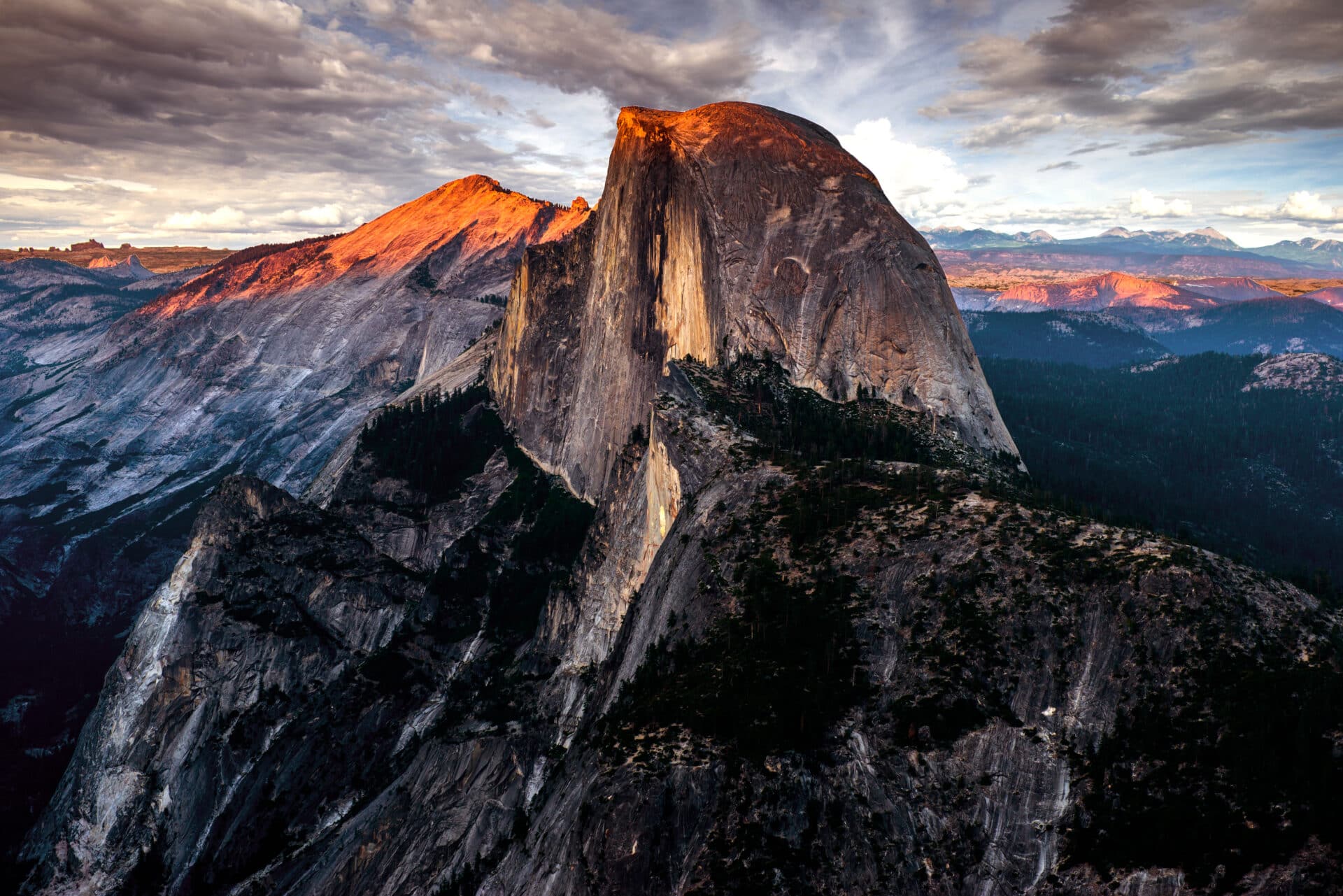
Recreation
Yosemite Village: Yosemite Valley is a must to check out during your visit—there is so much to see and do. Here you will find the Valley Visitor Center, The Ansel Adams Gallery, The Ahwahnee Hotel, Yosemite Falls, El Capitan, and spectacular views of Half Dome. It is typically busy, especially during the summer months, so be prepared for traffic and crowds.
Mariposa Grove of Giant Sequoias: To see the largest grove of giant sequoia trees inside Yosemite, visit the Mariposa Grove of Giant Sequoias, with more than 500 mature trees located within the Upper and Lower Grove. Enter the park from the South Entrance and on the right you’ll find the parking area. Park your vehicle and walk to the arrival area for the free 2-mile shuttle ride that will take you to the entrance of the Lower Grove. The trail from the Mariposa Grove toward Wawona may still be closed due to the Washburn Fire. When it’s open, you can walk along the newly constructed boardwalk and continue up the trail to some of the famous giants of the forest, including the Bachelor and Three Graces, and the Grizzly Giant. Continue your hike up into the Upper Grove to visit Galen Clark’s cabin and take in the view from the top of Wawona point.
Wawona: Stop at the Wawona Pioneer History Center and take a step back in time. Walk through historic buildings, take in horse-drawn wagons, and walk across the Wawona Covered Bridge. The Pioneer History Center tells the story of the early history of Galen Clark and other early settlers in Yosemite. During the summer season, take a ride in a stagecoach with a park ranger and learn what life was like in Wawona during the 1800s.
Glacier Point Road: Glacier Point Road is worth the drive to see the most magnificent views in Yosemite National Park. Glacier Point towers over Yosemite Valley, with spectacular vistas looking down on Half Dome, the Valley floor, Nevada Falls, and more. Glacier Point Road is a seasonal road that is closed during the winter months, typically from December to April, due to snow.
Tioga Road and Tuolumne Meadows: If you are planning a trip to Yosemite in the summer or early fall, it’s recommended to spend at least a day exploring the sights and trails located along Tioga Road. Many turnouts offer broad and beautiful vistas. Tioga Road leads to the stunning Tuolumne Meadows. At 8,600 feet, it’s one of the largest high-elevation meadows in the Sierra Nevada, with views of the Tuolumne River and surrounding peaks. It’s a wonderful spot for camping, hiking, cross-country skiing, and photography. Points of interest in this area include Siesta Lake, Yosemite Creek Picnic Area, Olmsted Point, Tenaya Lake, Lembert Dome, and Soda Springs.
Swimming: The Merced River offers one of the best places to cool off with views of El Capitan and Half Dome. Bring your own tube and float the 3-mile section of the Merced River through Yosemite. You may also rent a raft at Yosemite Valley Lodge, Curry Village, Yosemite Village, or The Ahwahnee Hotel. Another great swimming spot is Tenaya Lake, as it offers a large sandy beach option with a small parking area.
Winter sports
When there’s enough snow, Badger Pass Ski Area opens. Here you can affordably enjoy downhill snowboarding and skiing, snowshoeing, and Nordic skiing. Gear rentals and lessons are available, as well as Ranger-guided snowshoe walks. Please check the park’s program list for details. Bring your own snowshoes to get away from the crowds and off the beaten track. One of the most magical experiences at the park is ice skating outdoors at the Curry Village Ice Rink. The rink is open from mid-November to mid-March, conditions permitting. Visitors can also speed down the snow tubing hill operated by Yosemite Hospitality, which offers inner tubes rentals. For some fun in the snow, bring your sled to the snow play area at Crane Flat.
Bundle up and go ice skating after dark. The stars and the view of Half Dome lit at night are spectacular.
Where to hike at Yosemite National Park
Hiking is one of the best ways to experience Yosemite National Park. The Yosemite Wilderness has more than 750 miles of trails that range in elevation, distance, ecological zones, and solitude. There are trails to fit every fitness and skill level. You might want to try different trails depending on the time of year you visit. In spring, plan to hike to waterfalls to watch winter’s run-off melt away. In summer, hike into the backcountry to see stunning vistas and wildlife. In fall, stop and spend time looking at the trees as their leaves make the forest a fire of color. Choose a trail that best suits your ability and interests.
Easy hikes
Yosemite Valley: Most of the easier trails in the park are located in Yosemite Valley. Once you leave the valley floor, changes in elevation will become much more pronounced.
Lower Yosemite Falls: This paved trail is 1 mile in length with 50 feet of elevation. The eastern portion is wheelchair accessible.
Bridalveil Fall Trail: This short half-mile round-trip hike takes you to one of the first waterfalls you’ll see in Yosemite Valley, Bridalveil Fall. With only 80 feet of elevation gain, it’s a great option for the whole family.
Moderate hikes
Wapama Falls Trail: There are many hiking trails in the Hetch Hetchy area, along with spectacular views of waterfalls, wildlife, and springtime wildflowers. One of the most popular hikes in this area is the hike to Wapama Falls. This 5-mile round-trip hike follows the stunning shoreline of Hetch Hetchy Reservoir and includes spectacular views of Tueeulala Fall and Wapama Falls. This trail can be wet and hazardous in the peak spring months when the water rushing across the bridge at the base of Wapama Fall is very cold and swiftly moving. It’s strongly advised not to attempt to cross the bridge at the base of the falls under these conditions.
Dog Lake and Lembert Dome: Located in the Tuolumne Meadows area, this 4-mile round-trip hike has an elevation gain of 850 feet. At the top of Lembert Dome there’s a spectacular view of Tuolumne Meadows and the surrounding peaks.
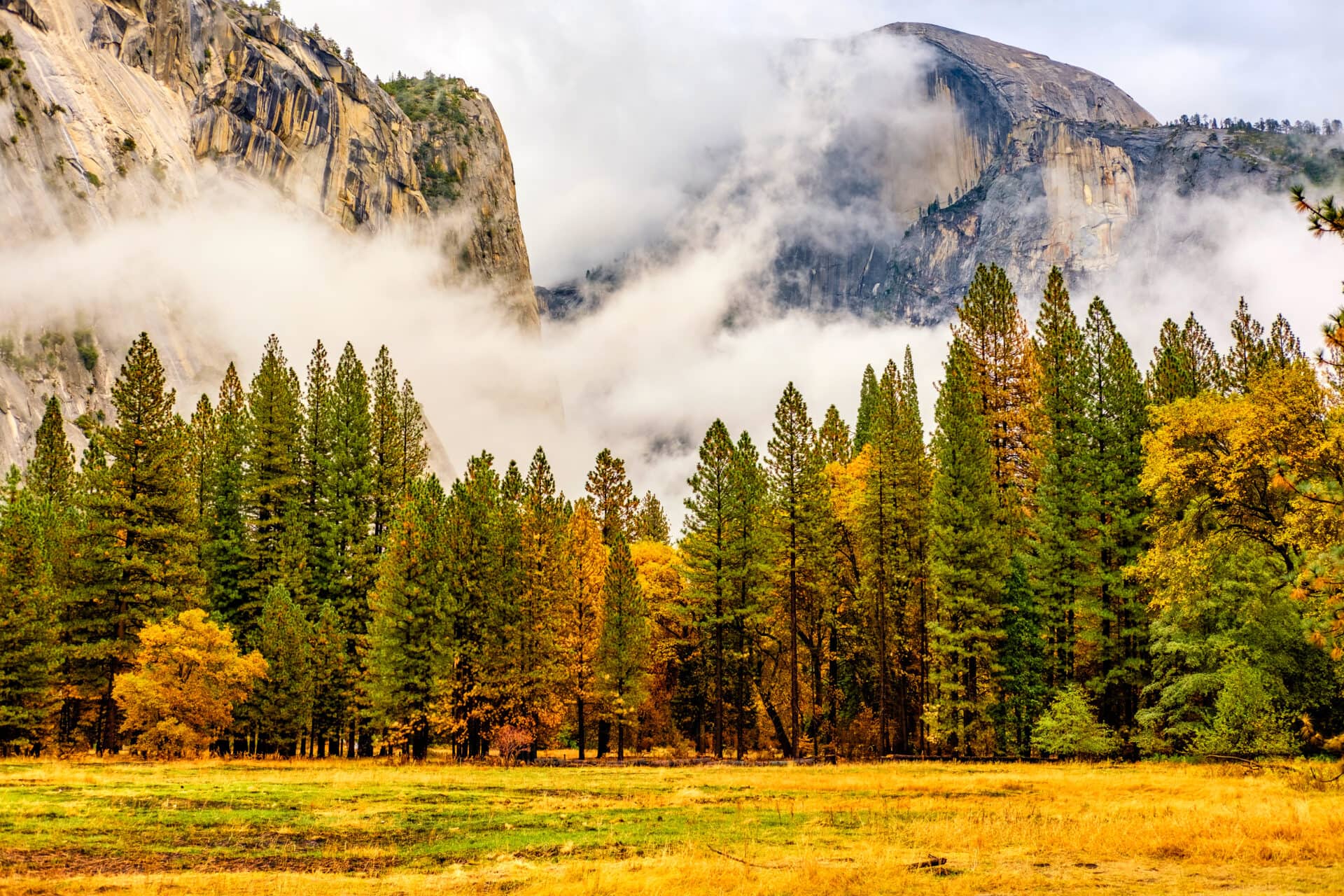
Strenuous hikes
The Mist Trail: This hike offers close-up views of Vernal Fall and Nevada Fall. The hike to the top of Nevada Fall, past Vernal Fall, is 5.6 miles round trip with about 2,000 feet in elevation gain. The trailhead can be found at Happy Isles shuttle stop number 16.
Merced Grove: One of the hidden gems found along the Big Oak Flat Road is the Merced Grove of Giant Sequoias. There are more than 20 mature sequoias located in this grove. Parking is extremely limited for this trail and the hike to see these magnificent trees is rated as a strenuous hike by the National Park Service (especially in winter). The sequoias in the Merced Grove are only visible after hiking 1.5 miles from the trailhead, with a 500-foot drop in elevation. The hike back out from the grove back to the trailhead is steep. Make sure you carry plenty of water and bring snacks. There are no water sources along this trail.
Upper Yosemite Falls: Hike the Yosemite Falls Trail to reach the top of the 2,425-foot waterfall, the tallest in North America. The historic trail was built between 1873 and 1877 and is one of the oldest trails in Yosemite. This 7.2-mile round-trip trail is strenuous with 2,700 feet of elevation gain.
Valley Loop Trail: While this is a longer trail at 11.5 miles round-trip, it remains fairly level for the duration of the journey. You’ll be able to see the sheer granite cliffs that rise from the valley floor along this trail.
Half Dome: One of the most well-known trails in the National Park System is also one of its most difficult. A permit is required to hike the iconic Half Dome, which will take you up the steep ascent to the peak. With nearly 15 miles, and gaining 5,000 feet in elevation along the way, the average hiker is going to need at least 12 hours. Anyone with a fear of heights or who is unsure of their footing should avoid this trail, which involves ascending a cable section to the peak. Note that summer storms can arrive without notice so it’s important to remain mindful of the weather.
Pet-friendly hikes
Wawona Meadow Loop: The best pet-approved trail in the park is the 3.5-mile Wawona Meadow Loop. Leashes are always required in Yosemite
A wilderness permit is not required for day hikes (unless hiking to Half Dome) or for staying in lodging facilities and front country campgrounds. Free wilderness permits are required year round for backpacking or any other overnight stays in the Yosemite Wilderness.
Where to stay in and around Yosemite National Park
There are many lodging and camping options available in Yosemite Valley. From the Ahwahnee Hotel, Yosemite Valley Lodge, Camp Curry, and Housekeeping Camp to the Upper Pines, Lower Pines, and North Pines campgrounds, there is something for everyone. Note that reservations fill quickly for overnight accommodations inside Yosemite Valley, so plan ahead.
Lodges and Hotels within Yosemite
Whether you want to stay in a rustic tent cabin at the High Sierra Camps or prefer a more comfortable room at the luxurious Ahwahnee Hotel, Yosemite Hospitality offers a wide range of accommodations. Reservations fill up quickly, so book well in advance, especially for holiday and weekend stays.
The Ahwahnee Hotel: This is the only luxury lodge in the park and is a National Historic Landmark, conveniently located in Yosemite Valley. If you’re a fan of NPS-style “parkitecture,” you must stop here. The Ahwahnee features a gift shop, sweet shop, lounge, and heated outdoor pool. The elegant Ahwahnee Dining Room, with massive floor-to-ceiling windows, is a picturesque place to grab breakfast, lunch, or dinner. Note that the lodge will be temporarily closed from January 2 to March 2, 2023.
Yosemite Valley Lodge: The Yosemite Valley Lodge is a more budget-friendly accommodation and a great option for large groups and families. There is a stunning view of Yosemite Falls from the pool. Multiple dining options are available.
Curry Village: To be more in touch with the outdoors, Curry Village is a wonderful option and offers a variety of accommodation types ranging from heated and unheated canvas tents to wood cabins. There is also a basic motel, the Stoneman Cottage, that offers private baths, daily housekeeping, and heating, but no telephones or televisions.
Housekeeping Camp: If you want rustic accommodations, but don’t want to pack and put up a tent, Housekeeping Camp is one of the most affordable non-camping options available within Yosemite. These riverside, open-air camps are built with three concrete walls with a canvas roof and curtains for privacy. Each has a bunk bed and a double bed, but bedding is not provided. Blanket, sheet, and pillow packs are available to rent on a nightly basis, or guests can bring their own bedding. Since these are very basic accommodations, there are no televisions or phones. Book early as the sites go quickly.
The Wawona Hotel: This historic estate-style hotel was established in 1856 and is near the Mariposa Grove of Giant Sequoias. It offers rooms with private or shared baths; a dining room serving breakfast, lunch, and dinner; a swimming pool; riding stables; and a 9-hole golf course.
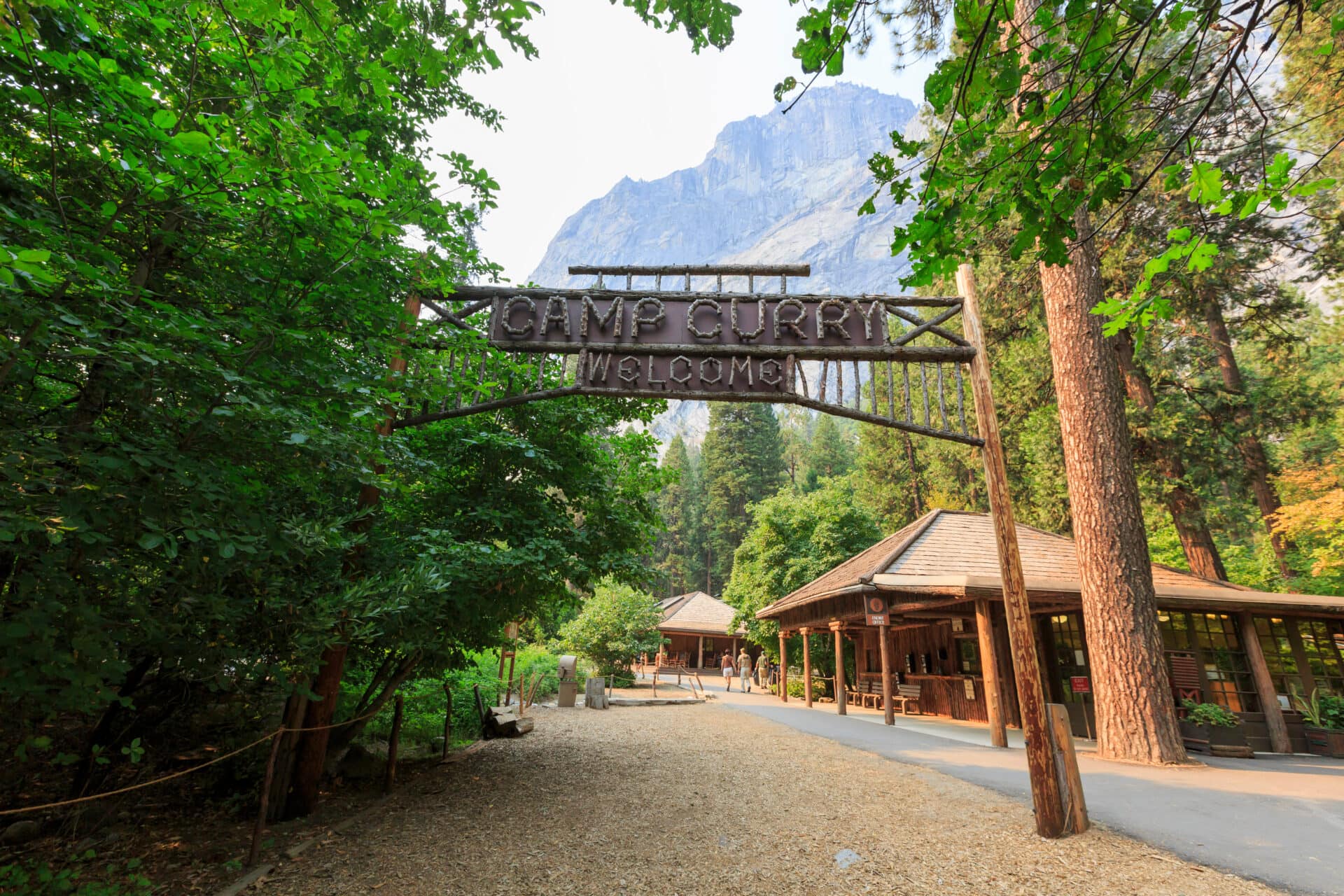
Camping
Campgrounds in the park
If you plan on camping in Yosemite during the summer, you’ll likely need to secure a reservation months in advance. There are 13 campgrounds divided into three sections of the park. Campgrounds within Yosemite Valley include Upper Pines, Lower Pines, North Pines, and Camp 4. Campgrounds located south of Yosemite Valley include Wawona Campground and Bridalveil Creek Campground. Campgrounds located north of Yosemite Valley include Hodgdon Meadow Campground, Crane Flat Campground, Tamarack Flat Campground, White Wolf Campground, Yosemite Creek Campground, Porcupine Flat Campground, and Tuolumne Meadows Campground (which is currently closed through 2023). Keep in mind that amenities and facilities vary depending on the campsite, including toilets, showers, dump stations, food storage, parking, pets, and campfires. Group, RV, and horse campsites are available.
Campgrounds outside of the park
Camping options are more limited outside of the park. There are some Bureau of Land Management (BLM) campgrounds along Highway 140 and Forest Service campgrounds in the Stanislaus National Forest near Groveland and the Sierra National Forest near Oakhurst.
Winter ski huts
If you’re an expert skier, you can stay in the Ostrander or Glacier Point ski huts. The Ostrander Hut is a two-story stone structure on Ostrander Lake at 8,500 feet of elevation. It sleeps 25 people and features very basic overnight accommodations and cooking facilities, and is a 10-mile ski trip from the Yosemite Ski and Snowboard Area. The Glacier Point Ski Hut is in Yosemite High Country with views of Yosemite Valley and Half Dome. The rustic accommodation sleeps 20 people and includes bunk beds, bathrooms, wood stove, and sofas. It’s a 10.5-mile cross-country ski trip from Badger Pass Ski Area. Reservations are required.
Insider ranger tip: Reservations are not required to visit Yosemite National Park. However, it is strongly recommend that you make a reservation if you plan to stay overnight in Yosemite.
Where to eat in and around Yosemite National Park
Food and dining options in Yosemite Valley include casual meals such as groceries at the Village Store, pizza at Curry Village Pizza Patio and Bar, food court options at Base Camp Eatery, or breakfast at Degnan’s Kitchen.
Fine dining experiences can be had at the Wawona Hotel Dining Room. Snuggle by the fire, take in the views from the veranda, relax in an Adirondack chair on the lawn or enjoy an elegant meal in the dining room. Ahwahnee Dining Room, with its 34-foot-high vaulted ceilings, is another impressive spot. Expect to pay a premium price for dining inside the park.
Eating outside the park can be a challenge with many places in the surrounding area closing seasonally. The closest options outside the park are almost an hour away.
Try the Chipotle Cheddar Ciabatta at Kevin and Randi’s Old Fashioned Meat Market in Groveland along Highway 120.
How many days should you plan to spend in Yosemite National Park?
There’s no denying it, spending only one day in Yosemite is rough. It’s just far enough away from many major population areas that countless people drive in for the day, arriving around 10 to 11 a.m., only to see traffic in Yosemite Valley, before wanting food when the dining areas are swamped, and before you know it, it’s time to go home. This isn’t fun for anyone and that’s not what the park rangers want.
If you truly only have a single day, your best bet is to pick one region of the park and spend your time there. This will reduce the amount of time spent in the car. Most people who are visiting for the first time will want to head to Yosemite Valley, but keep in mind that it will be the most crowded. Other parts of the park also offer vast beauty and an array of ways to explore the park. Depending on the time of year, a 1-day visit in the summer can include activities such as hiking, picnicking, taking a scenic drive, going for a swim, wildlife viewing, and more. During the winter months, you can enjoy things like skiing, hiking, ice skating, snowshoeing, and photography.
If possible, staying at least one night is recommended, so you have time to truly explore the park and all that it has to offer. If you’re staying for more than a few days, break it up and spend time not only in the western side of the park, but also in the more remote eastern side.
